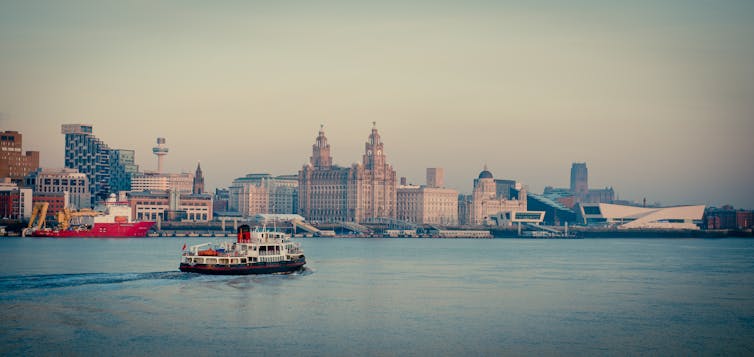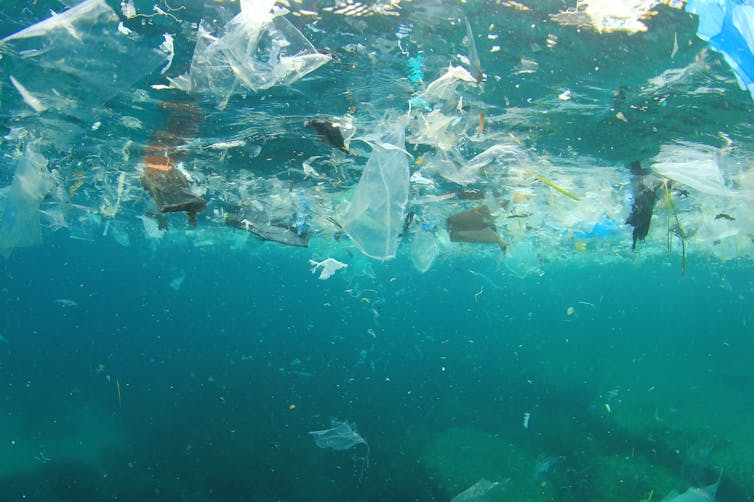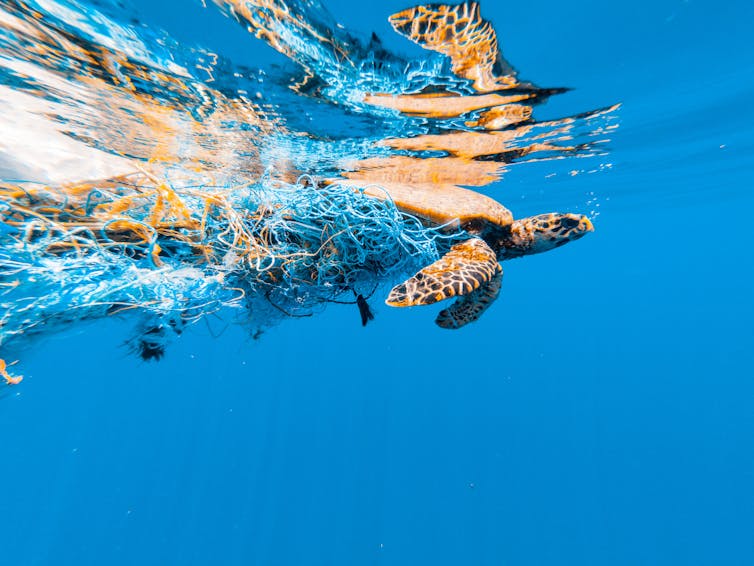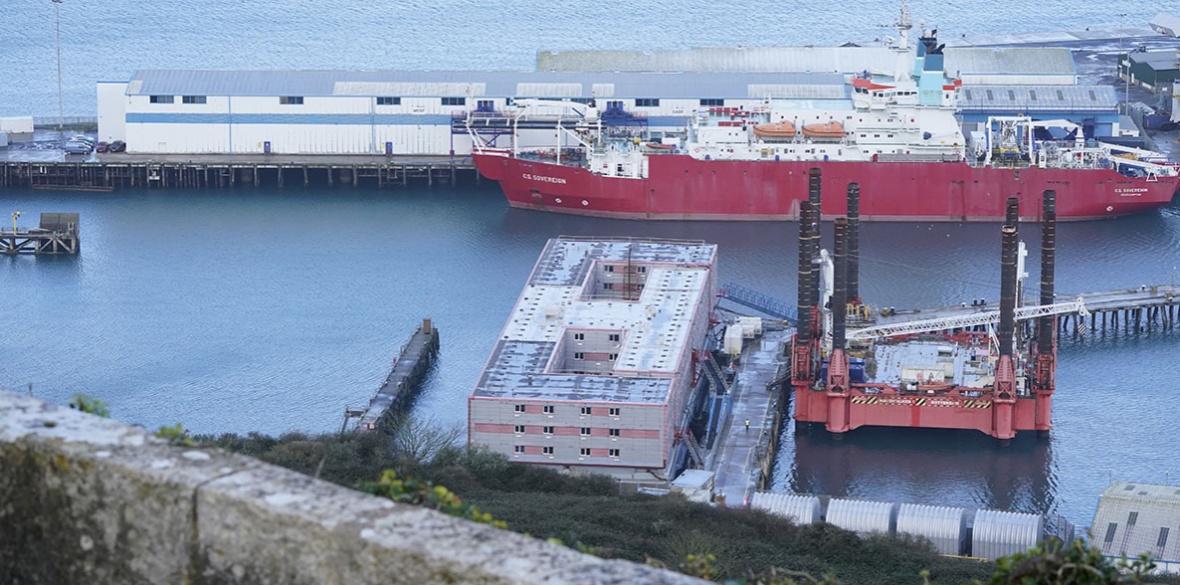High levels of PFAS forever chemicals found flowing into River Mersey – new study

Shaun Jeffers/Shutterstock
Patrick Byrne, Liverpool John Moores University
Huge volumes of toxic and cancer-causing forever chemicals are flowing into the River Mersey in north-west England. With a busy, industrialised skyline and both Manchester and Liverpool nearby, it’s the second-most populated river catchment in the UK after the Thames.
None of England’s rivers are in good chemical health. The recent State of Our Rivers 2024 report from The Rivers Trust found that one of the most concerning groups of synthetic chemicals, per- and polyfluorinated substances (PFAS), contaminates almost every river in England.
Known as forever chemicals because they can take thousands of years to break down, PFAS persist in the environment and accumulate in living things. They threaten ecosystems and human health, not just in the Mersey, but in every industrialised river around the world.
My team of hydrologists and I found that levels of two cancer-causing PFAS washing off the land and into the Mersey – perfluorooctane sulfonate (PFOS) and perfluorooctanoic acid (PFOA)– are among the highest in the world. Both PFOS and PFOA, now banned in most countries, were used to make many consumer and industrial products including furniture, cookware and fire-fighting foams.
Our study established that around 50% of PFOS, a type of PFAS that’s classed as probably carcinogenic, in the River Mersey was coming from supposedly clean water discharges from 44 different wastewater treatment works. PFAS are found in treated water because they are very difficult to remove using current water treatment technologies. Almost all wastewater treatment work effluents in the UK contain PFAS.
Our research highlights that we don’t really know where the remaining 50% of that PFOS is coming from. Other potential sources include runoff from airports where big amounts of fire-fighting foams are used,
agricultural land and landfills. Some PFAS could contaminate groundwater or surface waters used as drinking water.
PFAS chemicals are all around us and impossible to avoid. Found in everything from food packaging to cosmetic products, they are also used to manufacture green energy technologies like electric cars and wind turbines.
Whenever PFAS are used to make these products they end up draining into rivers, so wildlife and humans living in the river basin are exposed to them. We don’t really know the long-term implications of the current exposure levels. But these chemicals will persist. If we keep discharging them into the environment, PFAS exposure levels – and potential risk to humans – can increase through drinking water contamination and accumulation in the food chain.
Pinpointing exactly where, how and when these chemicals enter rivers is not straightforward so scientists and governments don’t really have the regulatory measures and tools to hold polluters to account.

Avigator Fortuner/Shutterstock
Dilute, disperse and detect
Since the 1850s, the Mersey has been a hub of industry, particularly for cotton manufacturing and chemical production. Most cities, including Liverpool and Manchester, have been built close to rivers and seas, partly to dilute pollution and transport it away. Out of sight, out of mind.
Today, enormous volumes of toxic waste are discharged into rivers and seas because dilution reduces chemical concentrations to extremely low or undetectable levels. But undetectable does not mean toxic chemicals are not present.
PFAS are ubiquitous. These forever chemicals have been detected almost everywhere we look, including in Antarctica, in whales and polar bears and in rainwater. Most people on Earth probably have detectable concentrations of PFAS in their blood. An estimated [97% of the US population] have PFAS in their blood, according to one study of 1,682 people.
A state of flux
Governments need to phase out PFAS from society to reduce human exposure and halt their accumulation in the environment and wildlife. The development of safer, healthier, greener alternatives is essential.
Even if the tap gets turned off immediately, the PFAS already in the environment, and in the River Mersey, will persist for thousands of years. To prevent further PFAS entering our rivers, more needs to be known about how they move into and through river systems. As part of our study, we measured this flux.
Instead of measuring a chemical’s concentration, flux is a measure of how much PFAS, for example in kilograms per year, flows off the land and out to sea. By measuring PFAS flux at multiple locations across a river basin like the Mersey, we can distinguish different sources of PFAS to the river, such as runoff from landfills, and establish how much comes from that source.
Governments and environmental regulators need more data like this to develop strategies that will prevent PFAS entering rivers. Our study not only confirmed wastewater treatment works effluents as a source of PFAS to the Mersey, we established exactly how much is coming from that source. This direct accountability is required to effectively target regulations and apply measures that make a difference.
Greater understanding of the flux and movement of PFAS in rivers and seas will help ensure better monitoring and regulation of these toxic forever chemicals – especially in hotspots like the Mersey that should be a top priority for enforcement.

Don’t have time to read about climate change as much as you’d like?
Get a weekly roundup in your inbox instead. Every Wednesday, The Conversation’s environment editor writes Imagine, a short email that goes a little deeper into just one climate issue. Join the 30,000+ readers who’ve subscribed so far.![]()
Patrick Byrne, Reader in Hydrology and Environmental Pollution, Liverpool John Moores University
This article is republished from The Conversation under a Creative Commons license. Read the original article.





